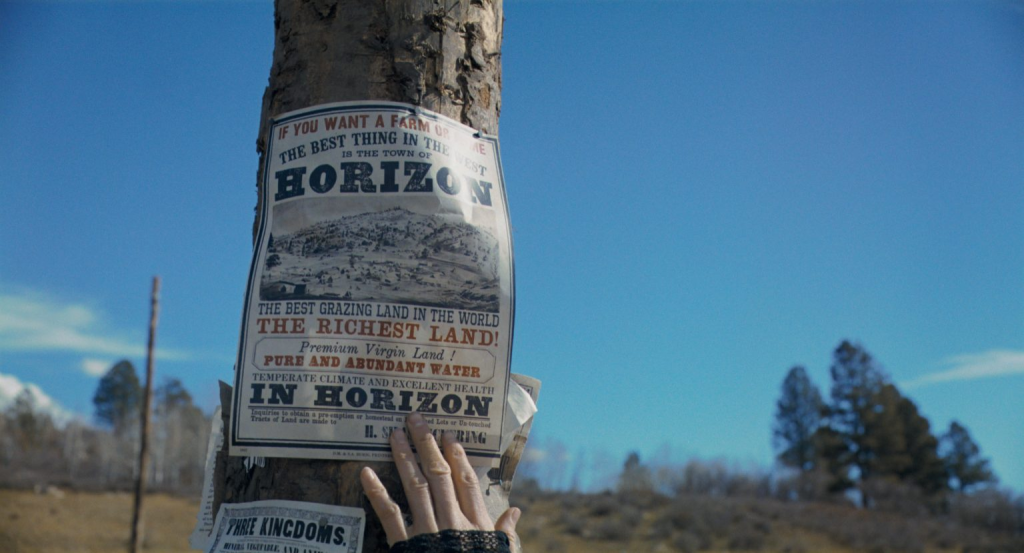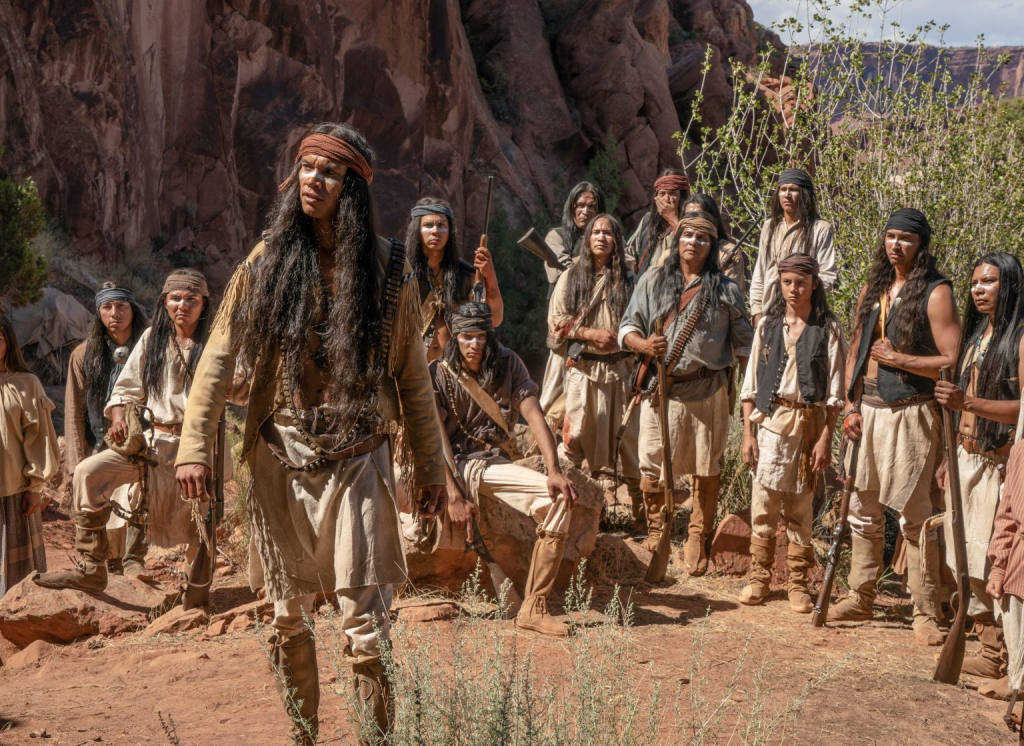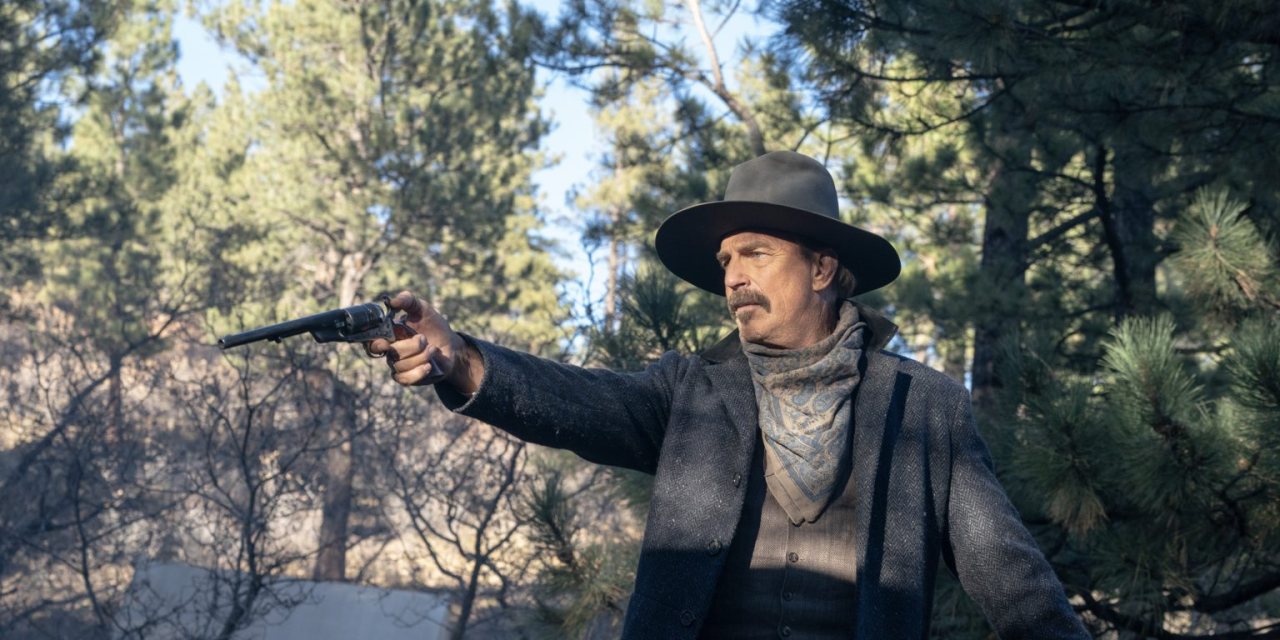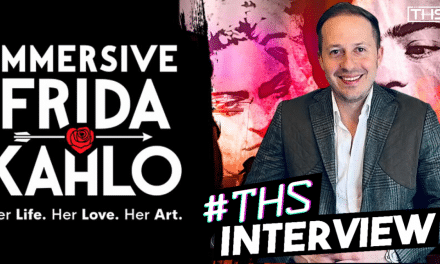The first chapter of Kevin Costner’s epic Western saga Horizon: An American Saga, is heading to theaters, telling the stories of various sets of travelers trying to make their way west to a purported safe haven in the expansive American West: the town of Horizon. It’s a massive tale, intended to stretch across four ‘Chapters,’ the first a substantial 3-hour introduction to the various threads that will populate the overarching narrative. In a press conference composed of Costner and the film’s extensive cast, they walked us through the sweeping quadrilogy’s origins, its attempt to treat the tension between settlers and the Native American community with authenticity, and teased the prospect of a fifth story that may one day grace the silver screen.

HORIZON IS ABOUT THE PROMISE AND CONFLICT THAT PRODUCED THE AMERICAN WEST
The core of Costner’s massive cinematic undertaking hinges around the inherent tension between, on the one hand, settlers’ perception of an American West full of promise and, on the other, the fact that thriving communities already lived across the continent. From the European perspective, Costner explained, “We started to get news about America about 400 years ago. “It was doing quite nicely without us,” but then predominantly European settlers started to arrive. “They started to understand that there’s a promise out here,” Costner continued, “that there was a land so big, that it went so far, that they could have what they didn’t have in Europe.”
That utopic thought bubble quickly popped against the reality that the continent was already amply populated with numerous Indigenous communities. “What they didn’t realize,” Costner explains of the colonizing settlers, was that there were “people here who had been flourishing for 15,000 years, and these two ideas came into conflict… our story deals with that.”

AN EPIC SAGA REQUIRES AN EPIC COMMITMENT
A narrative that’s set within such a massive and contentious historical process undoubtedly requires a depth equal to the task: cue the four-chapter design. “When I do a story, I don’t want to stop ‘til it’s finished,” Costner explained. “It was really a journey; it’s not a ‘plot movie,’ so, it was four [chapters].”
It’s novel for a filmmaker to front the commitment so far in advance, considering it’s an original tale paid partially out-of-pocket, but with Horizon, Costner’s idea of success was a little different: the story comes first. “My idea was not to wait to see if the first one was successful, I believe in telling this story,” he explains. “the only way this was successful in my mind is that it’s complete.”

It’s a story Costner wanted to tell some iteration of this story as far back as 1988, first as “a single movie, and when I wasn’t able to make that one, I decided I would make four more.” The expanded scope allowed him the ability to rethink his original concept. A lot of Westerns, he notes, start “with a town, there’s always a town,” and the films forget “the people that were there first… we displaced people.” In reengineering that project, Costner went back to that often forgotten first moment, “took the characters in that original story” and re-designed the narrative.
While we’re getting a four-chapter Western epic, Costner teased that in his redevelopment and expansion of the tale “there’s a fifth story, don’t get me going.” For now, the current four film treatment is the story he intends to tell, but Costner promised that “there’s a fifth story that, maybe someday” he’ll make, further expanding the story of the American West.
A NECESSARY FOCUS ON PORTRAYING INDIGENOUS COMMUNITIES ACCURATELY
Costner acknowledges that in order to tell the story of the settling of the American West accurately, a Western has to proceed with authentic casting, language, and cultural exhibition with regards to the portrayal of Indigenous communities. Authenticity “doesn’t seem like a big move to me,” Costner explains. “I don’t really take too much credit for it, it seems obvious and it makes for a better movie,” he explains. More importantly, it’s an essential part of portraying the story of the settling of the West: “you can’t have the Western story unless you have the First People’s story, we threw their way of life into chaos.”

Storywise, it’s a balance he tried to walk. “I’m aware of that [chaos],” Costner notes, “but I’m also aware of the people that came across this country and the resourcefulness that it required to carve out a life.” He clarifies he’s “not looking to reinvent history,” but it means authenticity is a clear requirement for Horizon: “I can’t make a movie on the American West unless the Indigenous are involved.”
As star Tatanka Means notes, that’s a commitment that wasn’t always kept in the history of the genre. “We’re not Apache, but we’re enrolled tribal members, and I’m grateful to Kevin for casting us because I think a lot of our roles have been taken by people that claim some of our Indigenous blood or ancestry.” He continues to explain that “when we see our people on screen being represented, we want that authenticity… we want to hear our language spoken correctly and not butchered.”
Co-star Wasé Chief also spoke of the efforts that went into a culturally authentic portrayal of the Apache people. “Kevin made sure that we were gonna learn the real White Mountain Apache language,” working with a linguistic consultant to make sure it was properly represented on-screen. Chief explained that the pursuit of authentic representation has genuine gravitas, noting “it was a lot of pressure making sure that we’re representing our people in a good way.”
With Horizon: An American Saga – Chapter 1 hitting theaters June 28th and the second chapter coming as soon as August 16th, audiences will surely have ample opportunity to experience these lenses into the beginnings of the American West.
Horizon: An American Saga – Chapter 1hits theaters June 28th.
For more on Movies, make sure to check back to That Hashtag Show.





![That 90s Show On Netflix is Pure Joy! [Review]](https://thathashtagshow.com/wp-content/uploads/2023/01/That-90s-Show-review-440x264.png)